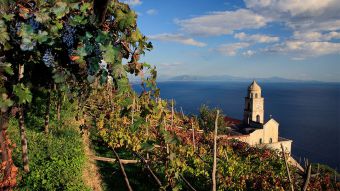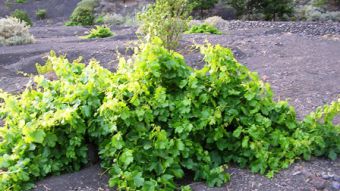Georgia, amphoras and white wine

Georgia proudly claims to be the cradle of wine. There is archaeological evidence that wine was being made there 8,000 years ago. It was a pioneer country, although little did this help it for many centuries. Caucasus is a land of invasions. Scythians, Persians, Romans, Byzantines, Arabs, Mongols and Ottomans are some of the peoples who, at some point or another, invaded Georgia, which was later annexed by Russia at the start of the 19th century. Georgia recovered its independence between 1918 and 1921, before becoming a part of the Soviet Union. Georgie regained its independence in 1991.
The prestige of Georgian wines in the East was comparable to that of French wines in the West. However, the Soviet regime collectivised its vineyards and turned Georgia into the wine fountain of the Communist world. Fine wine and communism do not make happy bedfellows. The Soviets destroyed the beautiful old vineyards in order to plant high production vineyards and construct industrial wineries.
But in spite of this, the Georgians held on to a gene pool of over 500 grape varieties as well as its millennial tradition of quality, for nearly seven decades. Because you see, in Georgia, wine is something very special. It is as if people breathe wine there. It is all around you; everyone plants vines and produces wine, virtually always following the secular method, vinification in qvevris. When independence came, the Georgians offered their wine to the world.

The inside of the quevri is coated in beeswax to make it more impermeable and to avoid rugosity. The qvevri is buried underground for reasons that are structural (lower risk of breaking) and functional (low temperature variation).
In Georgia all types of wine are produced: whites, reds, sweet, sparkling and fortified… perhaps another day we’ll talk about other Georgian wines and grapes, but today I want to concentrate on a very special style of wine: the qvevri white.
This is a wonderfully different wine. Suffice to say that the production process is classified as UNESCO Intangible Cultural Heritage - the only winemaking method to boast such a distinction.
The reader will know that red wine is produced by maceration of the must in fermentation with grape seeds and skins, while white wine is made by separating the must and solid parts before fermentation begins.

The process is as follows. The harvested grapes are gently trodden by foot in a stone trough. The free run juice flows into the qvevri by gravity. When it is almost full, skins, pips and (if they are dried out) stems are added to the vessel.
After a few days, when fermentation is complete, the qvevri is closed with a stone lid which is then sealed with clay and covered with earth. Fermentation continues, to the apparent indifference of the producers who cannot see what is happening inside the clay jar. The qvevri will not be opened again until at least the following spring. Pure Eastern philosophy of non-intervention, which would drive a Western oenologist nuts!
This philosophy works marvellously well. After five months, we might expect a dark, dirty, perhaps vinegary wine .... yet what we find when the qvevri is opened is a clear, limpid wine, whose colour, although without doubt more intense than a “European” white, is bright and well-defined. The solids have fallen to the bottom of the qvevri. These solids are called chacha and will become the raw material for Georgia’s fine brandy – but that’s another story.

They have that delicious discretion of wines that do not overpower with their fruity or woody flavours, but rather become our accomplices, often our friends, going on to deliver exquisite pleasure. I’m not sure why, but the best qvevri wines from Georgia possess a remarkable digestibility, naturally inviting you to pour yourself another glass...
Qvevri has captured the imagination of many producers. Gravner and Radikon in Friuli were the successful pioneers with their wines à la géorgienne. The natural, ‘let it be’ philosophy of the qvevri method also served as a calling cry for certain apostles of natural wine, led by an American producer of Georgian ancestry. The fashion for orange wine started with qvevri. But qvevri is not an orange or natural wine. The vast majority of these wines are produced by conventional viticulture and contain sulphites. I recommend enjoying these wines for what they are, something unique and special, and not to judge them by Western fashions and opinions. You will experience something new, even if it’s actually 8,000 years old. Above all, something good and different. The wines of Georgia offer an exciting alternative for the ever-inquisitive wine lover.






